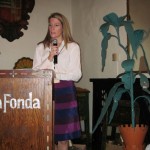One of Mary Colter’s shining achievements was her 1929 redesign of La Fonda on the Plaza. Working with the then-much-younger John Gaw Meem, she oversaw details as large as the fountain in an interior plaza (now La Plazuela Restaurant) and as minute as towel racks and bedspreads.
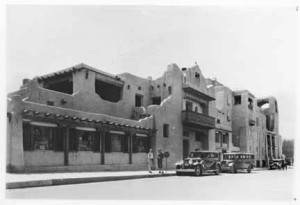
Edward Kemp photo of La Fonda, 1929. Palace of the Governors Photo Archives #046955.
Records show some type of inn standing at the southeast corner of the Santa Fe Plaza since 1610, but its many morphings continued across migrations of Spanish colonists, Santa Fe Trail riders, East Coast railroad tourists and today’s international mix of travelers. The version of La Fonda that Colter and Meem inherited had been in the hands of Rapp Rapp & Henderson who had expanded its footprint but left what Colter called a “dark, dreary and gruesome” interior.
The hotel, now owned the Ballen family, hired Santa Fe architect Barbara Felix in 2007 to inventory what was there and redesign the restaurant, then famous in part for tripping up customers with its unruly floors.
Fueled by an interest in restoring Colter’s complete vision — including that charming onetime open-air interior plaza — Felix said, “I naively asked, ‘Could we just get rid of the restaurant and return the courtyard to a courtyard?'” (The audience at her Saturday lecture during A Mary Colter Weekend, co-sponsored by the New Mexico History Museum and La Fonda on the Plaza, likely laughed just as hard as her bosses did at the time.)
Felix offered participants an overview of her efforts to forensically find the remnants of Colter’s design and modern-day them into a new vision. Down in storage, she found one remaining chaise longue, several blanket boxes and headboards that held a tale. Purchased for a Florida mansion from an antiques dealer in Spain, they were nearly destroyed in a hurricane during their overseas journey and later auctioned off to a sharp-eyed Colter.
Working with Colter’s correspondence with Meem, old photographs and whatever other documents she could find, Felix pieced together a few facts. Among them: The beloved painted window panes found throughout the hotel were not a Colter touch at all, but something added in the 1980s.
 “They’ve become such a beloved icon of Santa Fe that we didn’t want to remove them,” Felix said. “And frankly, I think I would have gotten lynched if I had.”
“They’ve become such a beloved icon of Santa Fe that we didn’t want to remove them,” Felix said. “And frankly, I think I would have gotten lynched if I had.”
(The windows were created not by a local artist but by a La Fonda employee, Ernest Martinez, who only recently retired at 80-some-years-old. Throughout the hotel, you’ll spy his whimsical Native American motifs and flora and fauna along corridor walls, on guest room furniture and even in the hotel’s parking garage. Felix assured Mary Colter Weekend participants that he painted a few extra window panes before retiring “because, as we all know, glass breaks.”)
Determined to restore the restaurant’s fountain, Felix did her best to find tiles she considered appropriate, order them, wait for delivery and prepare for restoration to begin. The surprise came when workmen began removing the flagstone floor that had long covered the spot. Underneath it, they found the shattered remnants of the original fountain.
“They had literally back-filled it into itself,” she said.
Too late to reconsider her tile choices, she went ahead with her plan, but held onto a shard of Colter’s tile as a memento.
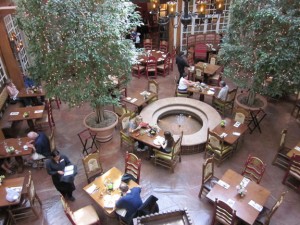 Though sheltered with a sturdy roof, La Plazuela today carries the feel of an open-air plaza (not to mention some of the tastiest meals in downtown Santa Fe).
Though sheltered with a sturdy roof, La Plazuela today carries the feel of an open-air plaza (not to mention some of the tastiest meals in downtown Santa Fe).
Throughout her work, Felix said she kept in mind one of Colter’s aims: to be tactile. “She wants you to touch the railings, the walls,” she said.
Felix worked with local artists and artisans, including Steve Dulfer, Klaus Messerer, Gunther Worrlein, Ward Brinigin, Mark Knutsen and Vivian Nichols.
Walk around La Fonda today, and the combined spirit of their efforts and those of artisans over the decades is evident in…
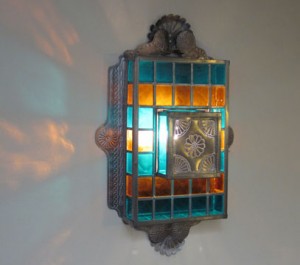
…charming light fixtures…
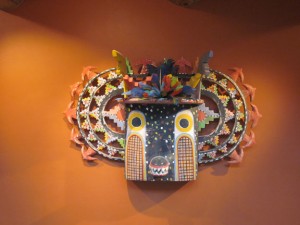
…artwork…
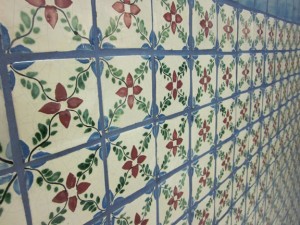
…walls filled with handmade tiles.
As part of the Mary Colter Weekend, La Fonda compiled a guide to the architectural-historical highlights of its interior — the onetime carriage house that’s now a parking garage; Colter’s last architectural assignment, a cantinita that’s now the French Pastry Shop; original paintings by Gerald Cassidy; and the classic Colter masterpiece of the Santa Fe Room.
 One of the joys of the weekend was watching participants wander through the hotel, the guide in hand, checking out the glories.
One of the joys of the weekend was watching participants wander through the hotel, the guide in hand, checking out the glories.
Our humble blog posts barely skim the surface of what we covered during A Mary Colter Weekend. If you’re interested in more, there are no better places to start than with the books by two of our speakers: Arnold Berke’s Mary Colter: Architect of the Southwest; and Stephen Fried’s Appetite for America: How Visionary Businessman Fred Harvey Built an Empire that Civilized the West.
In concluding her lecture, Felix asked whether Colter was still relevant. She cited Colter’s knowledge about how materials and culture work together, how she set the standard for National Park system architecture, and about her timeless sense of design. In a haunting question that she left participants to answer, Felix asked:
Are we building structures today that will still be relevant, let along standing, in 100 years?

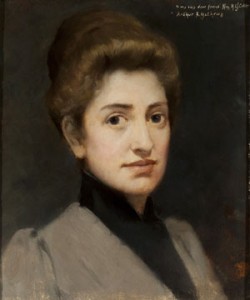
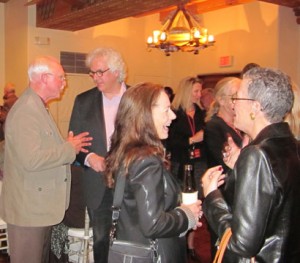
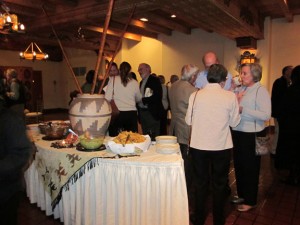
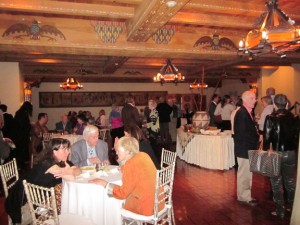
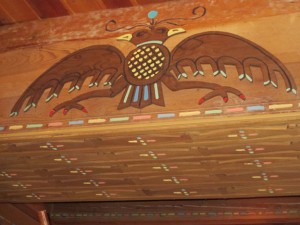
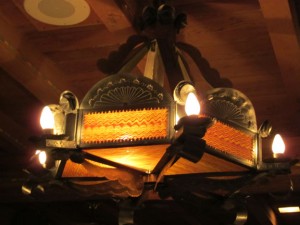
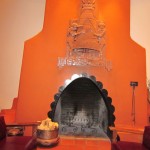 Among the difficulties that Felix encountered was the discovery that not all of Colter’s efforts were as solid and lasting as the sculpted terra-cotta mantels of German artist
Among the difficulties that Felix encountered was the discovery that not all of Colter’s efforts were as solid and lasting as the sculpted terra-cotta mantels of German artist 